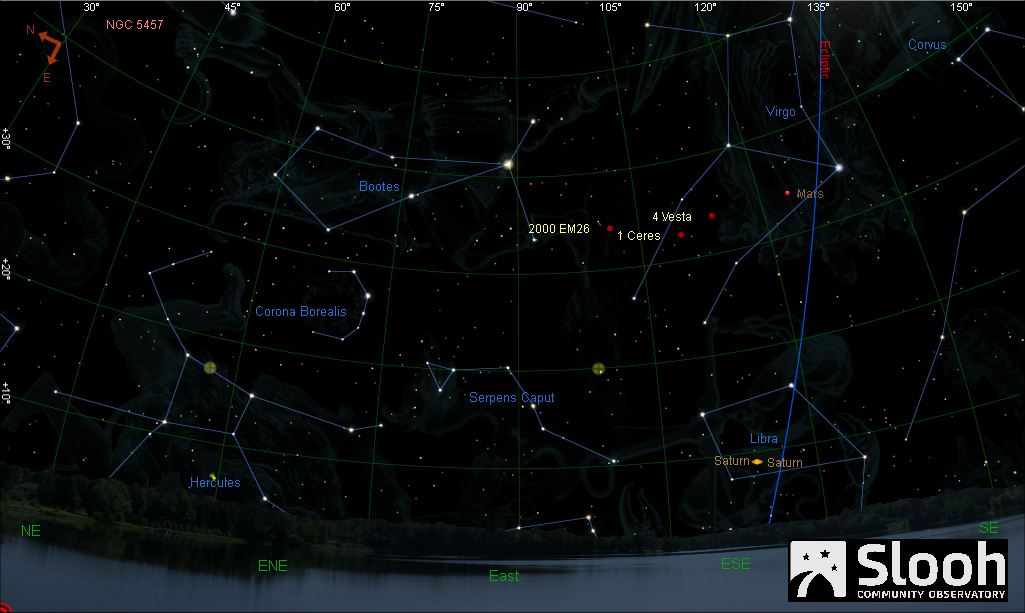Help Wanted to Find Lost 'Moby Dick' Asteroid

You could help scientists rediscover a big asteroid that has been lost in space for 14 years.
Officials with the online Slooh Space Camera tried to image the asteroid 2000 EM26 — nicknamed Moby Dick by some stargazers — on Monday night (Feb. 17), when it cruised within 2.1 million miles (3.4 million kilometers) of our planet. (For comparison, the moon orbits Earth at an average distance of 238,900 miles, or 384,500 km.)
But the effort was unsuccessful, suggesting that astronomers are missing some key details about the near-Earth asteroid's orbit. Slooh officials are now urging the public to help fill in these gaps about Moby Dick, which hasn't been seen since March 14, 2000, just nine days after its discovery.
"We are calling on amateur astronomers to find this asteroid, and as a reward we will promote their accomplishment on our homepage for one year," Slooh CEO Michael Paolucci said in a statement. "We don’t have the authority to name the asteroid after them, but we would if we could."
The near-Earth asteroid is thought to be about 885 feet (270 meters) wide. While 2000 EM26 poses no impact risk to Earth, losing track of it still highlights our planet's vulnerability to space-rock strikes, Slooh officials said.
"Discovering these near-Earth objects isn’t enough. As we’ve seen with 2000 EM26, all the effort that went into its discovery is worthless unless follow-up observations are made to accurately determine their orbits for the future," Slooh Observatory director Paul Cox said in a statement. "We not only need to find them before they find us, but we also need to keep a watchful eye on them."
Moby Dick's flyby came nearly one year to the day after two major asteroid events got the world's attention.
Breaking space news, the latest updates on rocket launches, skywatching events and more!
On Feb. 15, 2013, a 65-foot-wide (20 m) space rock exploded without warning in the skies above the Russian city of Chelyabinsk, Russia. The Russian fireball occurred just hours before a 100-foot-wide (30 m) asteroid called 2012 DA14 gave Earth a close shave, missing the planet by just 17,200 miles (27,700 km).
Follow Mike Wall on Twitter @michaeldwall and Google+. Follow us @Spacedotcom, Facebook or Google+. Originally published on Space.com.

Michael Wall is a Senior Space Writer with Space.com and joined the team in 2010. He primarily covers exoplanets, spaceflight and military space, but has been known to dabble in the space art beat. His book about the search for alien life, "Out There," was published on Nov. 13, 2018. Before becoming a science writer, Michael worked as a herpetologist and wildlife biologist. He has a Ph.D. in evolutionary biology from the University of Sydney, Australia, a bachelor's degree from the University of Arizona, and a graduate certificate in science writing from the University of California, Santa Cruz. To find out what his latest project is, you can follow Michael on Twitter.

